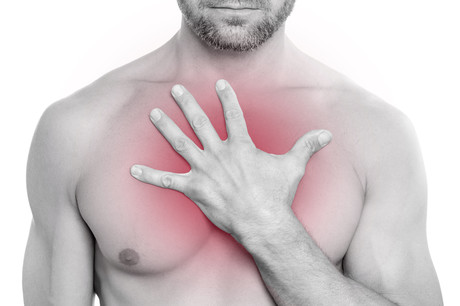Heart attack evaluations reducing testing, costs

Chest pain and heart attack evaluation processes introduced to emergency departments in recent years have contributed to reducing unnecessary testing, hospital stays and costs.
Researchers evaluated chest pain and heart attack risk in emergency departments (EDs) in two landmark articles published in the Medical Journal of Australia, finding improved outcomes for EDs and patients.
The studies were jointly led by specialists at the Royal Brisbane and Women’s Hospital (RBWH) — Professor Will Parsonage (cardiologist and clinical director of the Australian Centre for Health Services Innovation at the Queensland University of Technology) and Professor Louise Cullen (pre-eminent staff specialist in emergency medicine).
The first, the Accelerated Chest pain Risk Evaluation (ACRE) project, tested the effect of an accelerated diagnostic protocol (ADP) for patients presenting to EDs with chest pain. “Chest pain is among the most common primary problems with which patients present to EDs. Excluding acute coronary syndrome (ACS) in most patients without missing cases requires a conservative approach, but places a considerable burden on service delivery,” Professor Parsonage and colleagues wrote.
The ADP ― the 2-hour accelerated diagnostic protocol to assess patients with chest pain symptoms using contemporary Troponins as the only biomarker (ADAPT) ― was introduced in 16 Queensland hospitals during October 2013 to November 2015.
Outcomes were recorded for 30,769 patients presenting before and 23,699 presenting after the ADP was introduced. Following its implementation, 21.3% of patients were identified by the ADP as being at low risk for an ACS; the mean ED length of stay for all patients presenting with chest pain fell from 292 to 256 minutes. The mean hospital length of stay fell from 57.7 to 47.3 hours, and the hospital admission rate fell from 68.3% to 54.9%. An estimated $2.3 million in financial capacity was released as the result of reduced ED length of stay and $11.2 million through fewer hospital admissions.
The second study tested the safety and efficacy of another ADP, the Improved Assessment of Chest pain Trial (IMPACT).
IMPACT was introduced at the RBWH during February 2011 to March 2014. A total of 1366 patients presenting to the ED with symptoms of suspected ACS were stratified into groups at low, intermediate or high risk of an ACS.
High risk patients were treated according to current guidelines, while low and intermediate risk patients underwent troponin testing (with a sensitive assay) at presentation and two hours later. Intermediate risk patients underwent objective testing after the second troponin test; low risk patients were discharged without further objective testing.
“The IMPACT protocol stratified 244 (17.9%) patients to low risk, 789 (57.7%) to intermediate risk and 333 (24.4%) to high risk categories,” Professor Cullen and colleagues wrote. “The overall 30-day ACS rate was 6.6%, but there were no ACS events in the low risk group, and 14 (1.8%) in the intermediate risk group. The median hospital length of stay was 5.1 hours for low risk and 7.7 hours for intermediate risk patients.
“The IMPACT protocol safely and efficiently allowed a large proportion of patients presenting to EDs with chest pain to undergo accelerated assessment for risk of an ACS.
“Three-quarters of patients presenting to EDs with chest pain can be rapidly assessed using modified risk stratification criteria, early serial troponin testing and selective objective testing. Reducing unnecessary objective testing of patients at low risk of an ACS should be encouraged,” the authors concluded.
$1bn vaccine and antivenom manufacturing facility opens
A $1 billion cell-based influenza vaccine and antivenom manufacturing facility has opened in...
National concussion clinical guidelines now available
The first Australia- and New Zealand-specific guidelines for all forms of concussion — from...
Doctors criticise "risky prescribing agenda"
The AMA and RACGP have expressed disappointment in the Pharmacy Board of Australia's...

![[New Zealand] Transform from Security Awareness to a Security Culture: A Vital Shift for SMB Healthcare — Webinar](https://d1v1e13ebw3o15.cloudfront.net/data/89856/wfmedia_thumb/..jpg)
![[Australia] Transform from Security Awareness to a Security Culture: A Vital Shift for SMB Healthcare — Webinar](https://d1v1e13ebw3o15.cloudfront.net/data/89855/wfmedia_thumb/..jpg)




